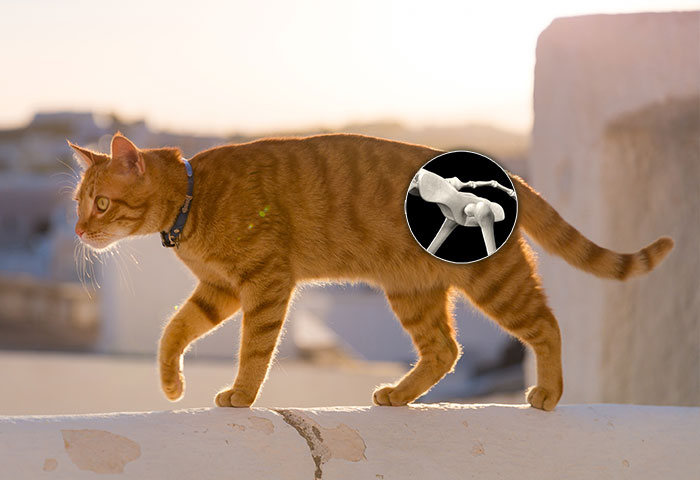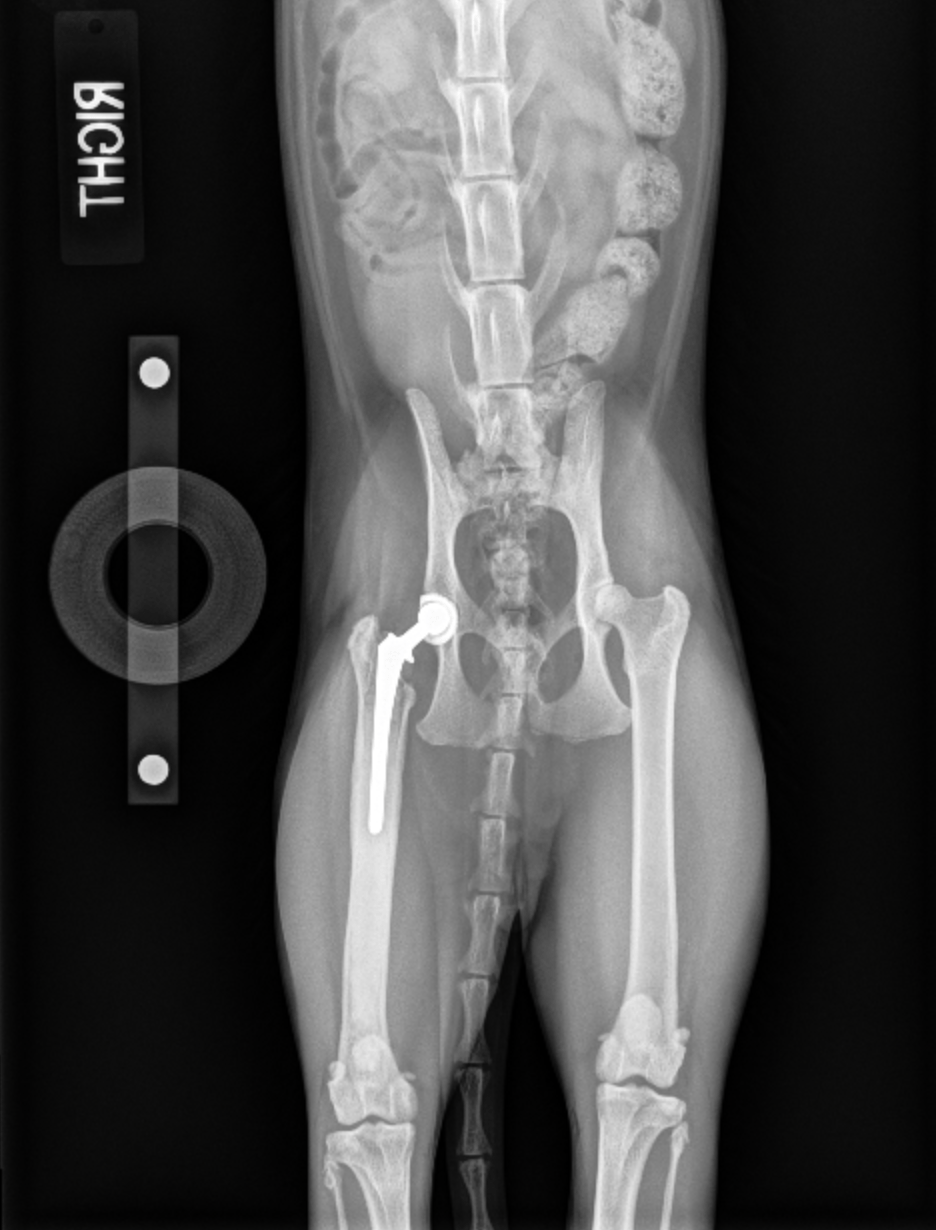-
Adopt
-
Veterinary Care
Services
Client Information
- What to Expect – Angell Boston
- Client Rights and Responsibilities
- Payments / Financial Assistance
- Pharmacy
- Client Policies
- Our Doctors
- Grief Support / Counseling
- Directions and Parking
- Helpful “How-to” Pet Care
Online Payments
Referrals
- Referral Forms/Contact
- Direct Connect
- Referring Veterinarian Portal
- Clinical Articles
- Partners in Care Newsletter
CE, Internships & Alumni Info
CE Seminar Schedule
Emergency: Boston
Emergency: Waltham
Poison Control Hotline
-
Programs & Resources
- Careers
-
Donate Now
 By Nick Trout, MA, VetMB, DACVS-SA, ECVS
By Nick Trout, MA, VetMB, DACVS-SA, ECVS
![]() angell.org/surgery
angell.org/surgery
surgery@angell.org
617-541-5048
December 2023
x
x
When it comes to cats and small breeds of dogs dealing with a variety of orthopedic disorders of the hip joint (osteoarthritis, coxofemoral luxation, capital epiphyseal fracture, avascular necrosis of the femoral head), there’s comfort in knowing that, for the most part, these patients typically do well with a commonly performed salvage surgery¾femoral head and neck ostectomy (FHO). The procedure requires minimal specialized equipment, there are no implants to worry about, and with dedicated post-operative physical therapy, results appear to be satisfactory, if not better. However, by opting for FHO, are we offering our patients the best possible outcome?
joint (osteoarthritis, coxofemoral luxation, capital epiphyseal fracture, avascular necrosis of the femoral head), there’s comfort in knowing that, for the most part, these patients typically do well with a commonly performed salvage surgery¾femoral head and neck ostectomy (FHO). The procedure requires minimal specialized equipment, there are no implants to worry about, and with dedicated post-operative physical therapy, results appear to be satisfactory, if not better. However, by opting for FHO, are we offering our patients the best possible outcome?
Given how commonly the procedure is performed, it is surprising how little long-term, objective data exists on FHO results. A review of the sparse literature cites persistent muscle atrophy in 50 to 82% of FHO cases greater than one year post-surgery, with decreased hip extension in 74% and persistent hip pain in up to 30% of cases. In one study, ground reaction forces were measured in cats that had undergone FHO and compared to normal cats, defining a statistically significant difference in weight-bearing and long-term gait abnormalities that could be detected using force-plate analysis (and not appreciated with orthopedic examination). The suggestion has been made that despite the many benefits of rehab for FHO patients, they will never return to full ‘normal’ function. So what’s the alternative to chronic medical management or FHO for hip ailments that often affect such young cats and small breeds of dogs with well over a decade and a half of active life in front of them?
x

Figure 1. 18-month-old NM cat with a six-week history of chronic lameness secondary to a capital physeal fracture (courtesy of Dr. Terri Schiller, DVM, CCRT, DACVS).

Figure 2. VD pelvic radiograph three months following total hip replacement (courtesy of Dr. Terri Schiller, DVM, CCRT, DACVS).
x
x
x
x
x
x
x
x
x
x
In the spirit of reconstruction and restoration, total hip replacement (THR) offers a “one and done” alternative that strives to return the function of the diseased coxofemoral joint to as close to normal as possible. Micro and Nano THR (Figure 1 and Figure 2 above) have been around for about twenty years, and, in one report implanting 69 Micro THR, 91% of patients achieved excellent function, defined as “resumption of all normal activity at home with no medication, no lameness, and no gait abnormality observed either by the owner or during examination, and full range of motion without eliciting any resistance due to discomfort.”
Cat and small breed THR are not for everyone. FHO involves no implants to loosen, break, wear out, or get infected. There is no concern about luxation of the new joint. The FHO outcome feels “reliable” and “predictable.” And then there’s the obvious cost disparity between the two procedures. Still, it is worth mentioning that proponents of Micro/Nano THR do not recommend adjunctive physical therapy. Therefore, the price difference shrinks when, for optimal results, you compare the cost of THR to the cost of FHO and a comprehensive post-operative PT regime. For decades, 20kg (or roughly 40 pounds) has been this magical number, the body weight below which cats and dogs have been considered to do really well with FHO to treat a wide range of hip ailments. In heavier, medium-sized, and larger breeds of dogs, veterinarians would go out of their way to try to restore optimal hip function.
Perhaps it is time to add Micro and Nano THR to the conversation about great options to maximize the quality of life for certain hip disorders of cats and small breeds of dogs. Perhaps it is time to offer more than “salvage” and seriously consider an opportunity to achieve “restoration.”
References
- Retrospective analysis of Canine Miniature Total Hip Prostheses. Warnock JJ et al. Vet Surg 32;285-291, 2003.
- Measurement of ground reaction forces in cats 1 year after femoral head and neck ostectomy. Schnabi-Feichter E et al. J Feline Med Surg 2021 Apr;23(4): 302-309.
- Micro Total Hip Replacement for Dogs and Cats: Surgical Technique and Outcomes. Vet Surg 39; 797-810, 2010